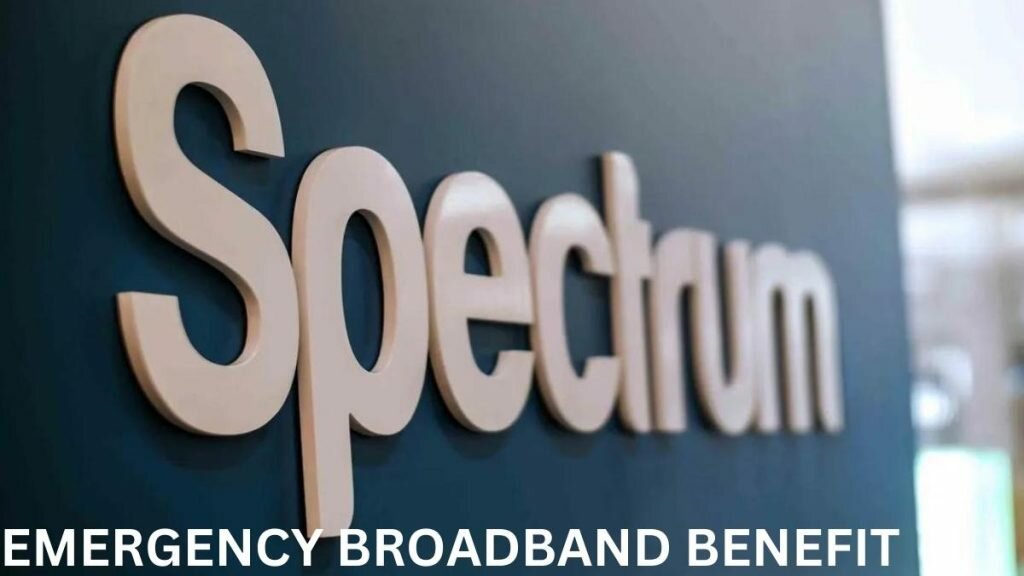The following article contains all the information regarding the Spectrum Emergency Broadband Benefit, the latest updates, how to qualify, and much more.
The Emergency Broadband Benefit was a temporary government assistance program introduced by the FCC (Federal Communications Commission) last year in February, that intended to help low-income households in the United States by partnering with service providers like Spectrum to provide affordable internet services.
The Emergency Broadband Benefit (EBB) Program provided a discount of up to $50 per month for broadband services for eligible consumers. Consumers who live on qualifying Tribal lands received enhanced support of up to $75 per month toward broadband services.
Additionally, the program provided a one-time device discount of up to $100 for a laptop, desktop computer, or tablet purchased through a participating provider. The one-time discount required a consumer co-payment of more than $10 and less than $50.
Table of Contents
What is the Spectrum Emergency Broadband Benefit?
The Emergency Broadband Benefit was a partnership between the FCC and major service providers in the US to provide affordable internet services to low-income households. Spectrum, a major service provider in the US, was one of the companies that offered the Emergency Broadband Benefit, and the program was known as Spectrum Emergency Broadband Benefit. The $32 billion emergency broadband benefit provided people up to $50 off of their monthly internet bill in 2021.
The Emergency Broadband Benefit was replaced by the Affordable Connectivity Program earlier this year. The Affordable Connectivity Program (ACP) is a new, long-term $14 billion program that replaced the Emergency Broadband Benefit Program. Households enrolled in the EBB Program as of December 31, 2021, continued to receive their current monthly benefit during a 60-day transition period. The transition period ended on February 28.
Spectrum found itself in the midst of controversy in May 2021, when it forced customers who were eligible for the EBB subsidy to opt in to full-price plans once the plan ran out. Rather than giving potential applicants the option to continue their coverage at full-price, it required them to do so in order to receive the benefit at all.
Paloma Perez, a spokesperson for the FCC, said internet service providers “must collect that opt-in affirmation to continue providing the broadband service after the program ends, but they may do so at the time of EBB enrollment.” But it’s unclear whether a forced opt-in complies with the FCC’s rules.
Affordable Connectivity Program- All you need to know
The Affordable Connectivity Program is a renewed version of the Emergency Broadband Benefit provided by the FCC that helps ensure that households can afford the broadband they need for work, school, healthcare and more.
The benefit provides eligible customers a monthly discount of up to $30 toward internet service and up to $75 monthly for households on qualifying Tribal lands. Eligible households can also receive a single use discount of up to $100 to purchase a laptop, desktop computer, or tablet from the selected service provider if they contribute more than $10 and less than $50 toward the purchase price.
The Affordable Connectivity Program is restricted to one service discount per month and one device discount per household.
You can enjoy the benefits of the Affordable Connectivity Program through Spectrum. Spectrum Internet offers a plan called Spectrum Internet 100 under the Affordable Connectivity Program (ACP), which provides eligible households with download speeds of 100 megabits per second (Mbps) and upload speeds of 20 Mbps for just $29.99 per month.
Who Is Eligible for the ACP Benefit Program?
The Affordable Connectivity Program is undoubtedly a great way to access internet services without mind-blowing internet bills, but unfortunately, not everyone is eligible for the program. There are certain eligibility criteria that your household must meet in order to receive the benefits of ACP. The eligibility criteria are listed below:
- Household income level should be below the 200% threshold as per the FCC poverty guidelines.
- Must be part of government assistance programs like the SNAP ( Supplemental Nutrition Assistance Program) or food stamps, FPHA ( Federal Public Housing Assistance), tribal land programs such as Tribal temporary assistance for needy families or TANF, Food distribution program on Indian reservations, etc.
- People dependent on their children or other relatives, can also benefit from the Affordable connectivity program.
Please note, you must meet at least one of the above mentioned eligibility criteria in order to qualify to receive the benefits of the
Affordable Connectivity Program.
Steps to Apply for the Affordable Connectivity Program
Follow the steps provided below to apply for the Affordable Connectivity Program:
Step 1:Gather all the required documents that provide personal verification, address, and eligibility proof.
- Personal verification documents include passport, birth certificate, US driving licence, US citizenship certificate, etc.
- Address verification documents include utility bill, mortgage or lease statement or most recent W-2.
- Proof of eligibility documents include proof of income like previous year’s documents of the state, federal or tribal tax return, verified documents of social security statements of benefits, letter of the child support award, Workers’ compensation statement of benefits, etc, or documents that provide proof of membership in government aid programs.
- Please note that the documents that prove that you are a member of government aid programs, must clearly state your full name (first and last name) with the program you have applied to and the issued date.
Step 2: head over to the website AffordableConnectivity.gov to submit an application or print out a mail-in application.
Step 3: contact your preferred participating provider to select a plan and have the discount applied to your bill.
That’s it! You’re all done!
Also Read:
A guide to apply for Spectrum Affordable Connectivity Program






